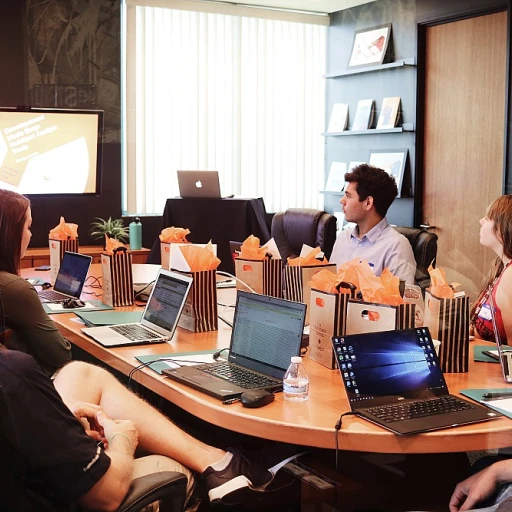
Understanding Consumer Behavior in the CPG Industry
Decoding Consumer Behavior
The consumer packaged goods (CPG) industry is a big deal—think multi-billion dollar scale. Companies like PepsiCo, Unilever, and Procter & Gamble dominate shelves and screens, making it crucial to understand what makes consumers tick.
The Psychology Behind Purchases
Ever wondered why you reach for one brand over another? A Nielsen study found that 59% of consumers prefer brands they believe are in some way responsible. This indicates a strong inclination towards ethical purchasing.
Data Facts and Figures
In the U.S., consumer preferences are shifting rapidly. According to PwC, 37% of shoppers are now more inclined to buy private label products. It's not just about the brand name anymore; it's about perceived value and quality.
Experts Weigh In
Dr. Allen Adamson, an expert in brand strategy, suggests, “Understanding consumer emotions and values has a direct impact on loyalty and sales. Brands need to align with what's important to their audience.”
Case Study: Amazon's Consumer Strategy
Amazon is a force to reckon with, affecting how we shop and consume. Through its sophisticated data analytics and consumer understanding, it matches products with individual preferences. This strategy led to their growth in the CPG sector, offering convenience and variety.
Consumer Behavior and ESG
Consumers aren’t just focused on price and product anymore. Environmental, social, and governance (ESG) factors are playing a significant role in purchasing decisions. Companies are compelled to be transparent and accountable. For more insights on how global health challenges impact consumer behavior, check out these strategic insights.
Trends and Shifts in Customer Preferences
Statistics show that 72% of consumers are ready to switch to brands that support a good cause. Moreover, 63% of consumers prefer purchasing from brands that take a stand on social issues, according to a recent Deloitte report.
Practical Insights for Management
So, what can be done? Leveraging master data management (MDM) allows for better alignment with consumer demands. Tools like SAP and Stibo Systems can help manage product data effectively, ensuring brands meet consumer needs precisely.
Top Trends Revolutionizing the CPG Sector
Emerging Technologies Reshaping the Landscape
The CPG industry is witnessing a paradigm shift with the advent of cutting-edge technologies. A report by Gartner reveals that nearly 47% of consumer products companies are investing in AI and machine learning to enhance product personalization and supply chain efficiency. Companies like PepsiCo and Procter & Gamble are leveraging these technologies to predict consumer behavior and streamline operations, thereby increasing profitability.
E-commerce and Digital Transformation
E-commerce has radically changed how consumers shop for CPG goods. According to a report by PwC, online sales of consumer packaged goods soared by 30% in the U.S. during 2020. Brands like Unilever have pivoted their strategies to prioritize digital platforms, seeing a significant increase in direct-to-consumer sales channels. This shift requires robust data management capabilities, and companies are increasingly turning to Stibo Systems for advanced master data management solutions.
Health and Wellness Trends
The rise of health-conscious consumers has spurred the growth of wellness-oriented CPG products. The focus on integrating health and wellness into product lines is evident with brands like Starbucks, which has innovated its menu to include healthier food and beverage options. Market research from BCG highlights that nearly 64% of younger consumers are willing to pay a premium for products that promote health benefits.
Personalization Drives Customer Loyalty
In an era of personalized experiences, CPG brands are focusing on customization to build stronger customer relationships. Microsoft's consumer survey found that 76% of consumers prefer brands that offer personalized experiences. Nike's groundbreaking NikeID platform allows customers to create custom shoes, leading to a 20% increase in repeat business.
Packaging Innovations for Sustainability
Sustainable packaging is becoming a cornerstone of CPG strategy. Walmart has committed to using 100% recyclable, reusable, or industrial compostable packaging for its private label brands by 2025. Nielsen reports that 73% of global consumers are willing to change their consumption habits to reduce their environmental impact, making sustainable packaging a crucial competitive advantage.
The Role of Data and Analytics in CPG Strategy
Harnessing Data to Drive Consumer Insights
Data is the lifeblood of the CPG industry, turning raw numbers into actionable strategies. According to Gartner, companies that use data analytics to understand consumer behavior see up to a 23% increase in revenue. This means diving into purchase history, social media interactions, and even weather patterns to predict buying trends.
Take PepsiCo as an example. By leveraging data analytics, they launched products like Mountain Dew Baja Blast based on insights from consumer preferences found in their consumption data. PepsiCo's approach exemplifies how real-time data analytics can drive targeted marketing and product launches.
The Competitive Edge of Predictive Analytics
Predictive analytics in the CPG industry isn't just a buzzword—it's a game-changer. A report by PwC states that 68% of CPG companies have adopted predictive analytics to streamline their supply chain and inventory management.
Amazon, for instance, uses predictive analytics to strategically stock warehouses closer to predicted demand. This not only minimizes delivery times but also boosts customer satisfaction significantly.
The Importance of Master Data Management
Master Data Management (MDM) is crucial for maintaining data integrity across the CPG industry. As per Stibo Systems, efficient MDM can increase operational efficiency by 52%. This ensures that everything—from product information to customer data—is accurate and up-to-date, reducing costly errors and data redundancies.
Retail giants like Walmart emphasize MDM in their operations, driving consistency across thousands of stores and millions of product SKUs.
Leveraging AI and Machine Learning in CPG
Artificial Intelligence (AI) and Machine Learning are no longer futuristic— they're reshaping today's CPG strategies. According to BCG, AI-powered personalization can boost sales by up to 15%, by providing tailored shopping experiences for consumers.
Unilever's implementation of AI in understanding and predicting consumer behavior resulted in enhanced consumer engagement and operational efficiencies.
Turning Data into Action with ERP Systems
Enterprise Resource Planning (ERP) systems are the backbone of effective data management in the CPG sector. SAP ERP systems offer integrated solutions that help CPG companies manage everything from inventories to financial planning.
Nike’s integration of SAP ERP has streamlined its global operations, reducing supply chain bottlenecks and improving overall efficiency.
Optimizing the Supply Chain Through Data
Supply chain optimization through data analytics is driving CPG growth. Deloitte reports that data-driven supply chain decisions can save up to 30% in operational costs.
Take Starbucks, which uses sophisticated data systems to forecast demand, improving both inventory management and reducing waste.
Expert Insights on Data Utilization
According to Michael Kash, a data expert at Gartner, “Data is not just an operational element; it's strategic. Companies leveraging data see higher efficiency and better consumer satisfaction.”
Embracing data and analytics in the CPG industry isn’t just an option; it’s a necessity for those aiming for sustainable growth.
To delve deeper into strategies related to financial complexities, check our insights on understanding the complex world of collateralized debt obligations.
Innovative Product Development and Brand Management
Harnessing Market Research for Product Innovation
In the fast-moving consumer goods (FMCG) industry, understanding the pulse of consumer tastes is paramount. Did you know that 72% of new product launches fail within their first year, according to a study by Nielsen? This statistic underscores the need for robust market research in driving innovation in the CPG sector.
Experts like Leslie Zane, founder of The Center for Emotional Marketing, stress the importance of tapping into consumer emotions to create compelling products. Market research should not just capture what consumers are buying, but why they are making specific choices. This insight is gold for brands aiming to develop products that don’t just meet but exceed consumer expectations.
Leveraging Technology in Brand Management
Technology has revolutionized brand management in the CPG industry. With platforms like SAP and Microsoft Dynamics ERP, CPG companies can streamline their operations, from production to sales. SAP’s solutions, for example, allow brands to leverage real-time data to make quicker, more informed decisions.
A compelling case is PepsiCo’s innovative use of AI and machine learning to predict consumer trends and manage their extensive portfolio more efficiently. Such technologies help in dynamically managing inventory, optimizing promotions, and even customizing marketing messages.
Case Studies: Brands That Got It Right
Consider Unilever’s approach to product innovation and brand management. The company has consistently ranked as one of the top CPG companies, thanks to its commitment to sustainable innovation. Unilever’s “Sustainable Living Brands” initiative has driven growth by emphasizing eco-friendly products, which grew 69% faster than the rest of the business, as reported in their annual sustainability report.
Another example is Nike, which has skillfully managed its brand through continuous product innovation. The success of their Flyknit technology, which minimizes waste and caters to environmentally conscious consumers, is a testament to their innovative mindset. Nike’s approach shows that balancing product innovation with brand values can foster strong consumer loyalty.
Product Lifecycle Management and Sustainability
Product lifecycle management (PLM) is becoming indispensable in today’s CPG landscape. Tools like PTC Windchill empower CPG companies to manage the entire lifecycle of a product—from concept to market launch. Effective PLM not only enhances product quality but also ensures compliance with increasingly stringent ESG (Environmental, Social, and Governance) criteria.
Brands like Procter & Gamble (P&G) have taken this a step further by integrating sustainability into their PLM processes. By 2030, P&G aims to make 100% of its packaging recyclable or reusable, aligning product innovation with sustainability goals.
Staying Ahead with Consumer Engagement
In a competitive market, engaging directly with consumers can provide a significant edge. PepsiCo engages its consumers through initiatives like the “PepsiCo Creator” platform, enabling them to co-create products. This level of engagement ensures that new products resonate well with the target audience.
Similarly, Starbucks has leveraged its extensive consumer base to strengthen its brand. Their innovative use of the Starbucks Rewards Program has not only driven customer loyalty but also provided invaluable data for product development. Starbucks customers engage regularly, sharing feedback that directly influences product offerings.
Expert Insights on Brand Management
Gartner analyst Steve Smith emphasizes that the future of CPG brand management lies in a combination of technology and genuine consumer engagement. According to Smith, “CPG companies that harness technology to forge deeper connections with consumers while delivering consistent brand value will dominate the market.”
In conclusion, innovative product development and brand management necessitate a multifaceted approach. Harness market research for product insights, leverage technology for efficient management, focus on sustainability, and engage actively with consumers. CPG companies that adopt these strategies stand to win not just consumer attention, but loyalty and long-term growth.
Supply Chain Strategies for the Modern CPG Company
Optimizing Supply Chain Operations for the CPG Industry
If there's one thing that truly makes or breaks a CPG company today, it's the supply chain. According to a study by PwC, 69% of CPG companies identify supply chain efficiency as their top priority. With billion-dollar brands like PepsiCo and Unilever leading the example, efficient supply chain strategies are a lifeline for sustainable growth in the consumer goods sector.
Technology's Transformative Impact on Supply Chains
When it comes to innovation, technology is a game-changer. Gartner's research highlights that CPG companies leveraging advanced supply chain technologies like IoT, blockchain, and AI have seen a 15% reduction in operational costs. For instance, Walmart's implementation of blockchain in its supply chain has resulted in significant improvements in transparency and traceability.
Microsoft and SAP are also playing pivotal roles in this transformation. Through their ERP solutions, these tech giants help CPG brands manage everything from inventory to logistics seamlessly. A key example is Procter & Gamble's adoption of SAP's S/4HANA platform, which boosted their supply chain efficiency by 20%.
Master Data Management's Role in Streamlining Operations
Master data management (MDM) is another cornerstone. A report by Stibo Systems suggests that companies with robust MDM systems witnessed a 25% improvement in supply chain coordination. With accurate and consistent data at their fingertips, CPG companies can make quicker, smarter decisions—a critical factor in the fast-paced consumer products industry.
BCG’s insights also emphasize the importance of integrating MDM into supply chain strategies to enhance product lifecycle management and mitigate risks. Consistency in data not only helps in effective demand forecasting but also optimizes procurement processes.
Case Study: Amazon's Supply Chain Mastery
Amazon’s supply chain model is often cited as the gold standard. The e-commerce giant's use of cutting-edge technologies like AI, machine learning, and robotics has redefined customer satisfaction. Thanks to their sophisticated algorithms, they can predict consumer behavior and manage inventory in real-time.
A study conducted by Deloitte found that Amazon's supply chain strategies lead to a 23% faster delivery rate compared to traditional retail models. This has set a benchmark for other CPG companies striving for excellence in supply chain management.
Challenges and Controversies
However, the journey is not without its hurdles. Labor income disparities and sustainability issues often cast a shadow over supply chain practices. According to a report by the Consumer Brands Association, nearly 40% of supply chain workers in the U.S. report wage-related grievances, affecting overall morale and efficiency.
ESG considerations are also becoming more prominent. Leading brands like Nike and Starbucks are increasingly focusing on making their supply chains more sustainable. This shift is not just a trend but a necessity, as consumer awareness and demand for ethical practices continue to rise.
Expert Insights on Future Supply Chain Strategies
Industry experts, including those from MIT’s Center for Transportation and Logistics, predict that the future of supply chains will be heavily data-driven. Advanced analytics and predictive modeling tools will become indispensable for CPG companies aiming to stay competitive.
In conclusion, optimizing supply chain operations isn't just about cutting costs; it's about driving innovation and sustainability. By embracing advanced technologies and robust data management practices, CPG companies can unlock unprecedented growth and customer satisfaction. As the industry evolves, staying ahead in supply chain efficiency will be crucial for long-term success.
Sustainability and ESG in the CPG Industry
The Growing Importance of ESG in the CPG Sector
Increasingly, CPG companies are realizing the critical role of ESG (Environmental, Social, and Governance) in shaping their strategies. As of 2022, 85% of consumers reported that they are more likely to buy from a company with a reputation for sustainability and ethical practices, according to a survey by Nielsen. This isn't just a passing trend; it's a shift in consumer expectations that brands like Nike and Unilever are keenly aware of.
Impact on Consumer Goods and Packaging
The push for environmentally friendly products has spurred innovation in packaging. For instance, Procter & Gamble has committed to making 100% of its packaging recyclable or reusable by 2030, a move in line with their consumers' preferences. PepsiCo has also jumped on board, aiming to reduce virgin plastic use across its beverage portfolio by 35% by 2025. This kind of commitment is not just good for the planet; it translates into significant consumer loyalty.
Data-Driven Sustainability
Data analytics play a pivotal role in driving these sustainability initiatives. By utilizing ESG data management systems, CPG brands are able to measure, analyze, and report on their environmental impact with greater precision. Companies like Stibo Systems are providing essential tools to manage master data effectively, ensuring transparency and accountability. Research by PwC shows that companies integrating comprehensive ESG measures can experience higher profitability and long-term growth.
Supply Chain Adaptations for Sustainability
Sustainability doesn't stop at product development. Modern CPG companies are rethinking their supply chains to minimize environmental impact. Walmart endeavors to achieve zero emissions across its global operations by 2040. Moreover, detailed studies from McKinsey found that optimizing supply chains for sustainability can reduce costs by up to 9%, creating a win-win for businesses and the environment.
Societal and Governance Aspects
Aside from environmental sustainability, social and governance factors are equally critical. Starbucks is a prime example, known for its ethical sourcing and fair trade practices. According to Gartner, brands that integrate strong social and governance metrics can see a 22% increase in brand value. Ethical labor practices and transparent governance structures not only enhance the reputation of consumer goods brands but also foster a more committed and productive workforce.
Challenges and Controversies
Of course, the path to ESG excellence is not without challenges. Amazon has faced criticism despite its sustainability pledges, primarily due to labor issues highlighted by reports from BBC. These controversies underscore the complexities of balancing environmental goals with social realities.
The Future of ESG in CPG
Looking ahead, the integration of ESG into the CPG industry will only deepen. Companies that lead with sustainable practices and comprehensive ESG strategies will not only meet regulatory demands but will also win the trust and loyalty of their customers. The trend is clear: sustainability and accountability aren't just buzzwords—they're key to thriving in the competitive landscape of consumer goods.
Adapting to the Retail Evolution in CPG
Embracing Omni-Channel Retail Strategies
The retail environment isn't what it used to be, and the CPG industry is feeling the shift. Traditional brick-and-mortar stores are now sharing the spotlight with e-commerce giants and emerging digital platforms. A recent study by PwC showed that 45% of consumers now shop for groceries online, a massive leap from just 27% pre-pandemic.
Amazon continues to dominate with their aggressive push into the grocery sector, while Walmart and Target aren't far behind. But it's not just about having an online presence. It's all about integrating online and offline channels into a seamless experience. Consumers expect a unified brand experience whether they're shopping from their couch or picking up in-store. PepsiCo's recent collaboration with various online grocery platforms is an excellent example of how brands are adapting to this trend.
Leveraging Advanced Analytics and Consumer Data
Data is the new oil. In today's retail landscape, leveraging vast amounts of consumer data can set companies apart. According to Gartner, 73% of CPG companies are increasing investments in advanced analytics. With cutting-edge data management tools from companies like Stibo Systems and SAP, brands can gain insights into everything from buying habits to seasonal trends.
Unilever uses machine learning to analyze customer feedback across social media platforms, enabling them to tweak products based on real-time consumer insights. Similarly, Procter & Gamble has integrated predictive analytics into their supply chain, ensuring products like personal care items are always in stock when demand spikes.
The Rise of Direct-to-Consumer Models
What do brands like Nike and Pepsi have in common? They're investing heavily in direct-to-consumer (DTC) models. By bypassing traditional retail channels, these companies can control the customer experience, gather more precise data, and increase profit margins. A recent Deloitte report indicates that nearly 58% of CPG brands are planning to increase their DTC efforts in the coming year.
One standout example is Starbucks with its app-based ordering system, which allows them to engage directly with customers and offer personalized promotions. Not only does this enhance customer loyalty, but it also provides Starbucks with invaluable data on consumer preferences and behaviors. Another example is Peloton, which has successfully built a DTC model that merges their high-end exercise equipment with live streaming services, creating an unparalleled customer experience.
Navigating Supply Chain Challenges
The modern supply chain is fraught with challenges—whether it's dealing with labor shortages, managing logistics amidst global disruptions, or meeting sustainability goals. To confront these issues head-on, companies like PepsiCo have adopted robust ERP systems provided by industry leaders like Microsoft and SAP. These systems integrate everything from inventory management to demand forecasting.
In a bid to ensure sustainability, Unilever has committed to making all their plastic packaging reusable, recyclable, or compostable by 2025. This not only gels with global sustainability trends but also meets the growing consumer demand for eco-friendly products. According to a PwC report, 68% of consumers consider sustainability when making purchase decisions.
The Importance of Customer Experience
Customer experience is at the heart of the CPG industry's evolution. It's not just about selling products anymore; it's about creating a memorable and engaging experience. Nike has mastered this with their flagship stores, combining retail with experiential zones where customers can try out products. Similarly, Procter & Gamble offers subscription services for recurring personal care products, making it easier than ever for consumers to stick with their favorite brands.
Even smaller brands are stepping up. Take Dollar Shave Club, for example. They initially gained traction through quirky, relatable ads, but retained their customer base by providing exceptional service and regular product updates.
Key Takeaways and Future Outlook for the CPG Industry
Consumer-Centric Strategies Will Drive Future Growth
The consumer packaged goods industry, or CPG industry, thrives on understanding and adapting to consumer behavior. It's how brands like PepsiCo and Unilever manage to stay relevant. A survey by PwC revealed that 59% of consumers are willing to switch brands for better product quality and customer service. This means that enhancing customer relationships through innovative products and seamless retail experiences will be crucial.
Leveraging Data for Competitive Advantage
The role of data in the CPG sector has grown substantially. According to Gartner, companies that effectively utilize data analytics see a 20% increase in sales. Data management is no longer a back-end function; it's a core strategy for brands like Procter & Gamble. Tools like Stibo Systems help in master data management, enabling brands to tailor products and marketing strategies precisely to consumer preferences.
Innovation Is Not Just a Buzzword—It's a Necessity
In the CPG world, innovation is the heartbeat that keeps companies alive. Companies like Nike and Pepsi are continually innovating to stay ahead. For instance, Coca-Cola invested heavily in zero-sugar products to meet the declining consumer demand for sugary drinks. The packaged goods industry thrives on such innovative product development.
Optimizing the Supply Chain for Efficiency
The modern CPG supply chain is all about efficiency and adaptability. Brands like Walmart have set benchmarks with their agile supply chain strategies. According to Deloitte, streamlining supply chains can reduce operational costs by up to 30%. Inventory management and real-time tracking are some of the methods being adopted to meet consumer demand swiftly.
Sustainability and ESG Considerations Are Here to Stay
ESG (Environmental, Social, and Governance) principles are becoming a significant part of the CPG industry's strategy. A report by BCG found that brands focusing on sustainability see a revenue increase of up to 5%. Companies like Starbucks are setting examples by committing to reduce their carbon footprint and use sustainable materials, proving that green practices are both ethical and profitable.
Adapting to Digital Changes in Retail
The retail landscape is changing, with digital channels gaining supremacy. Amazon's multi-billion-dollar success is a testament to this shift. According to a study by McKinsey, e-commerce in the CPG sector is expected to grow by 10% annually. Traditional brands must adapt to this new reality to stay competitive.
What's Next for the CPG Industry?
The future of the CPG industry looks promising but requires a blend of consumer-centric strategies, data utilization, constant innovation, supply chain optimization, sustainability, and digital adaptation.














